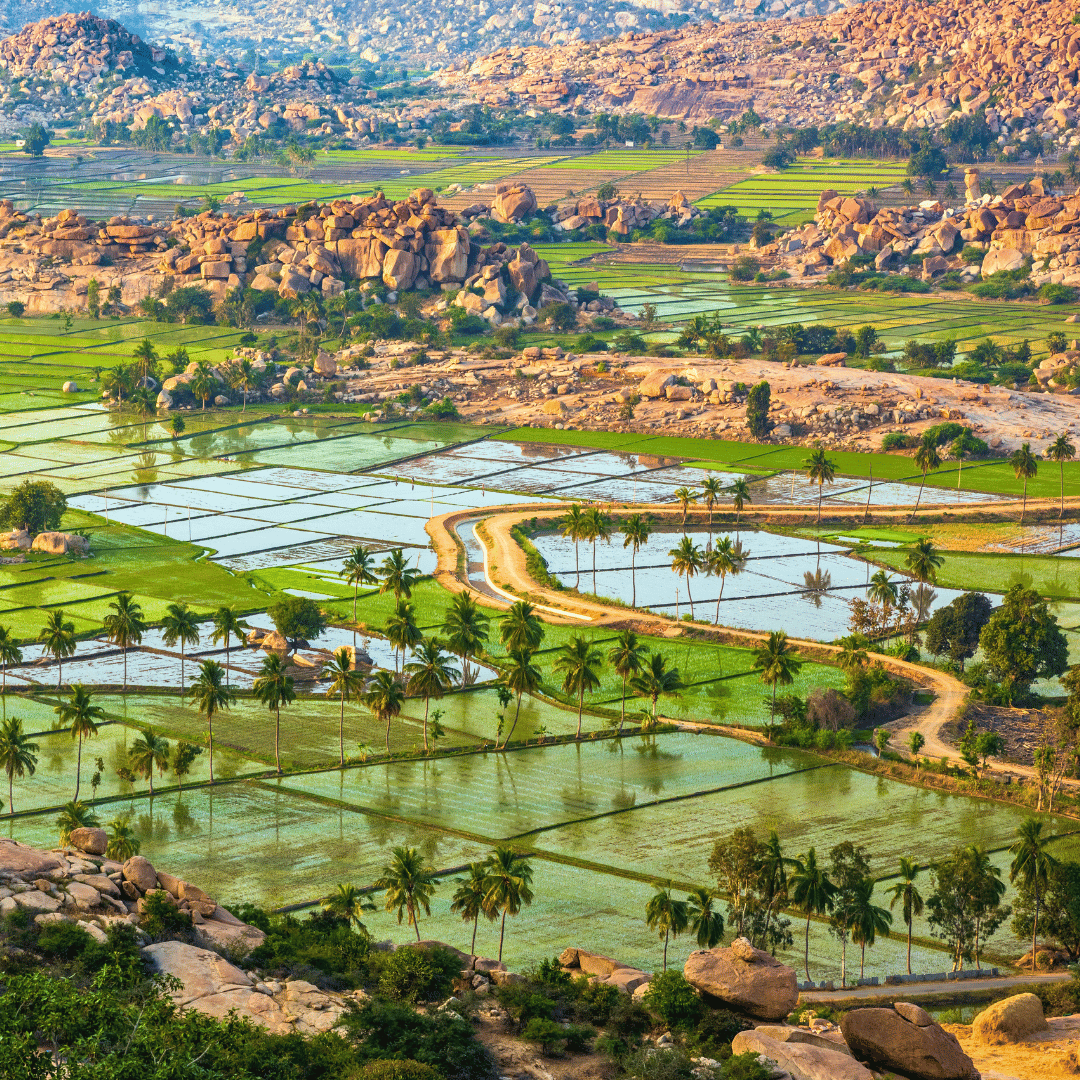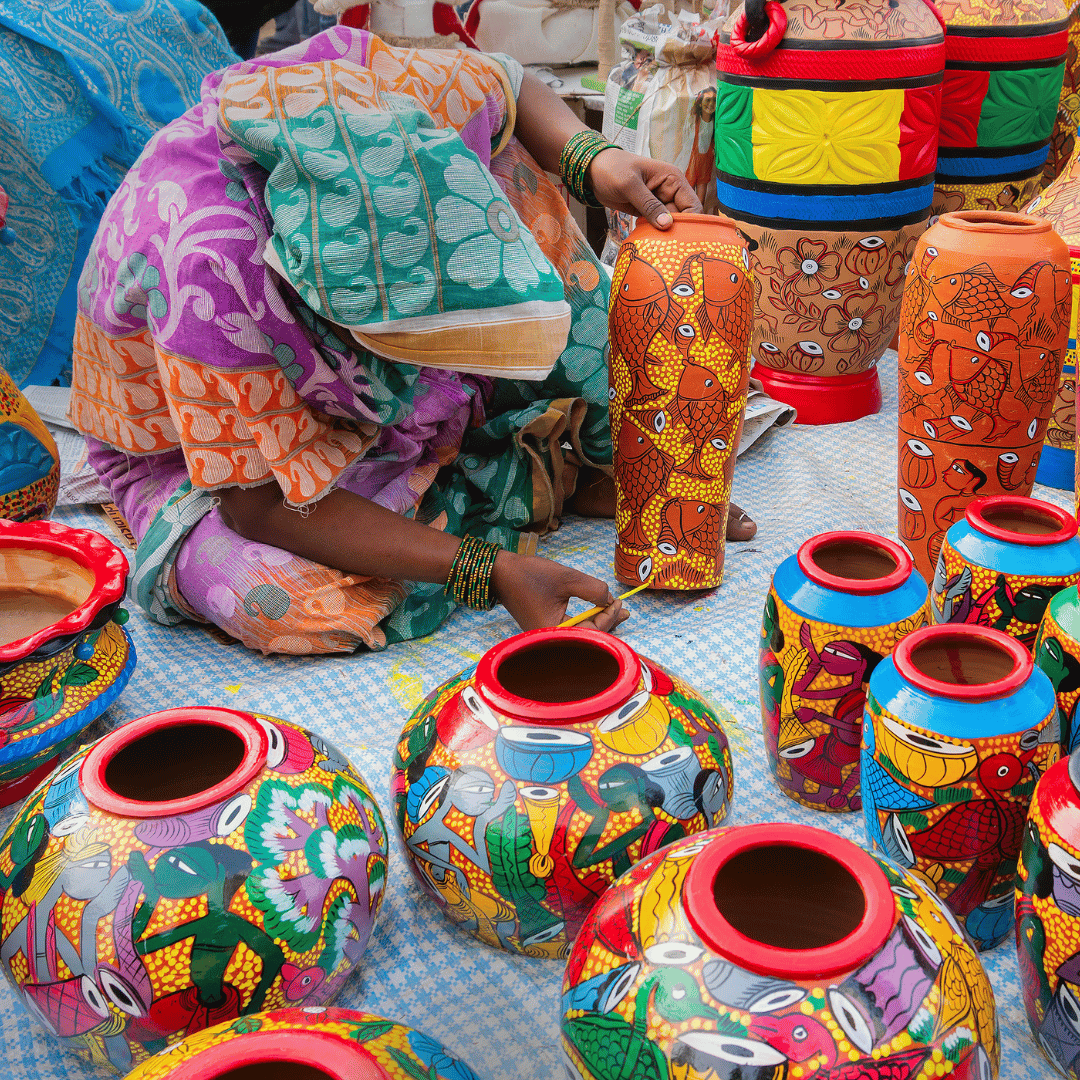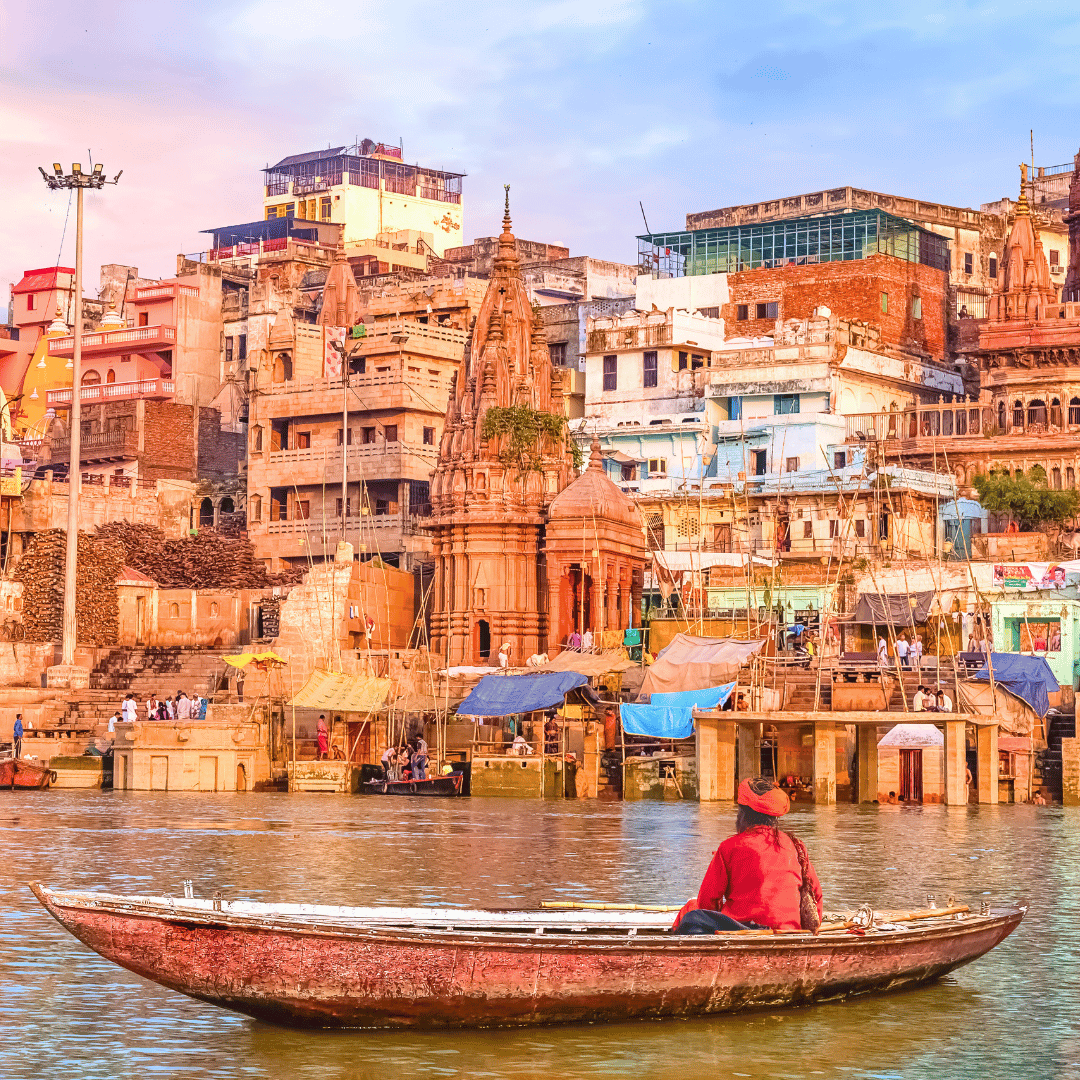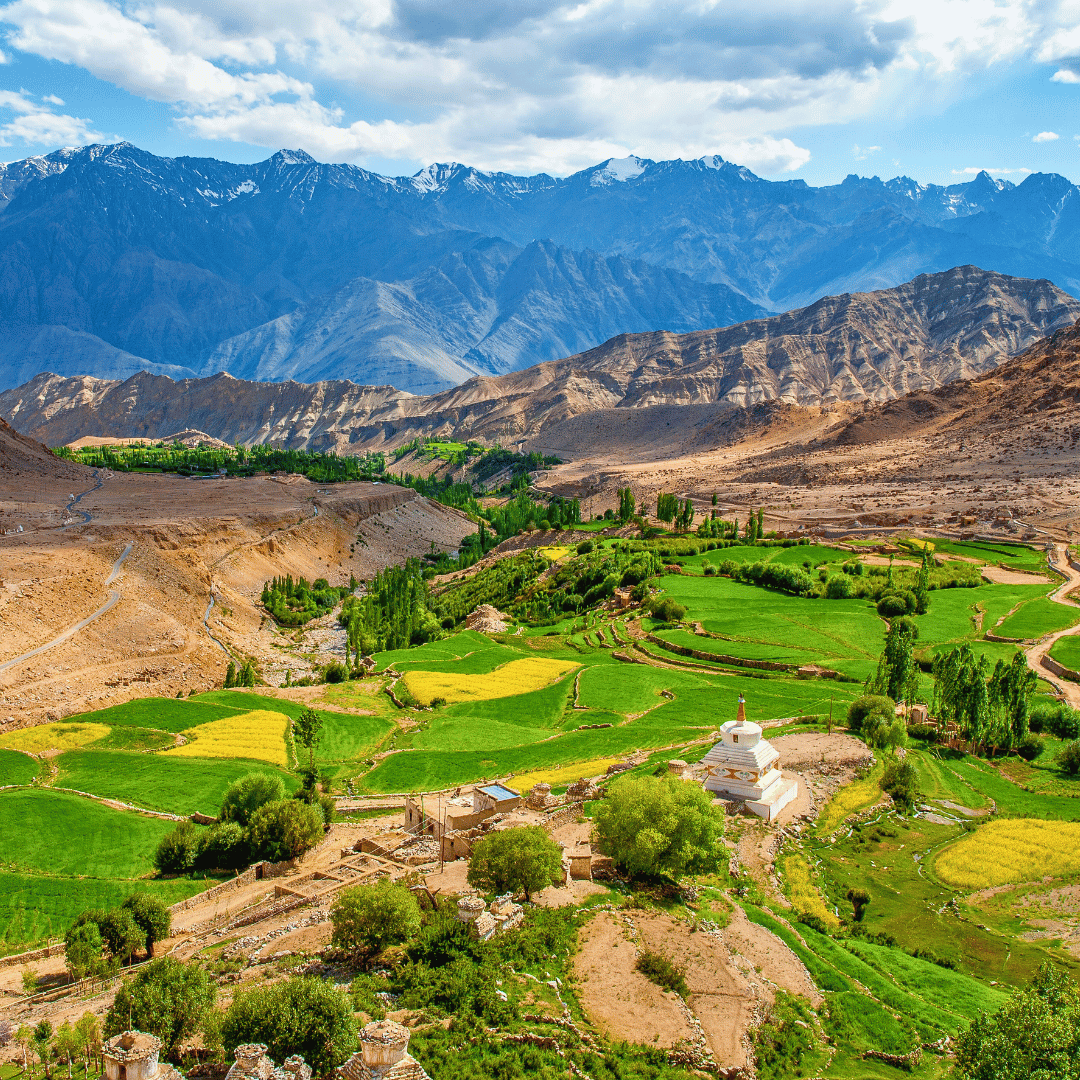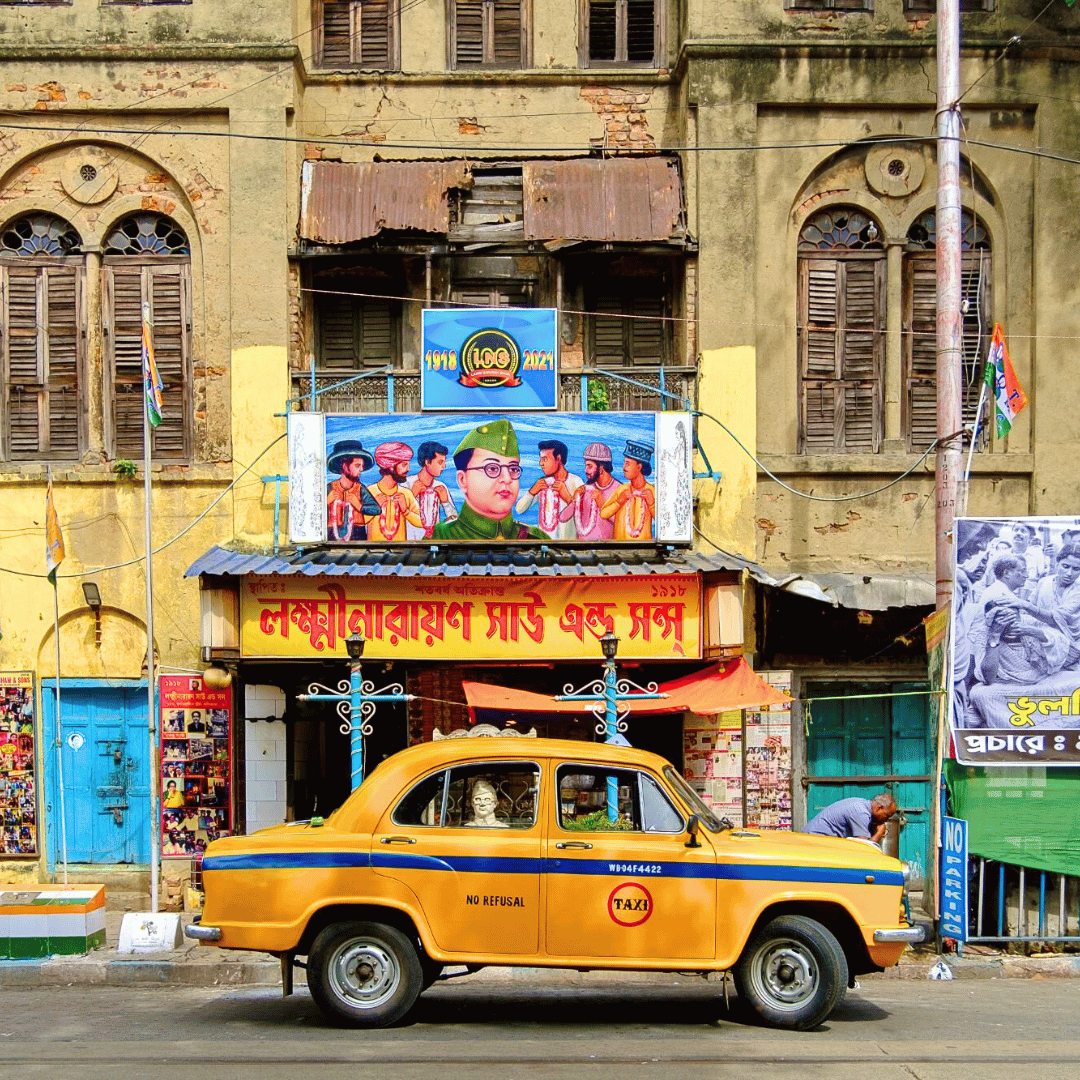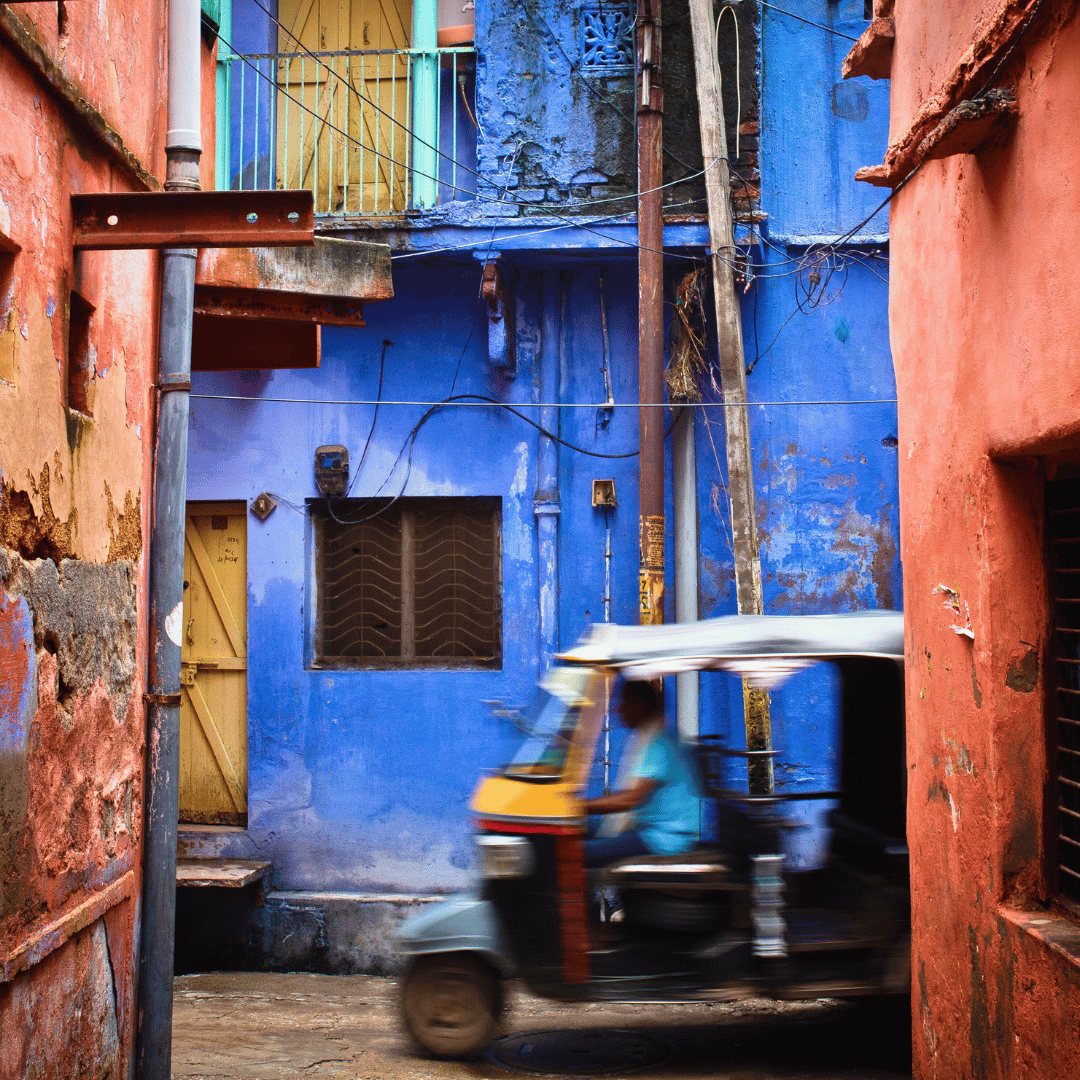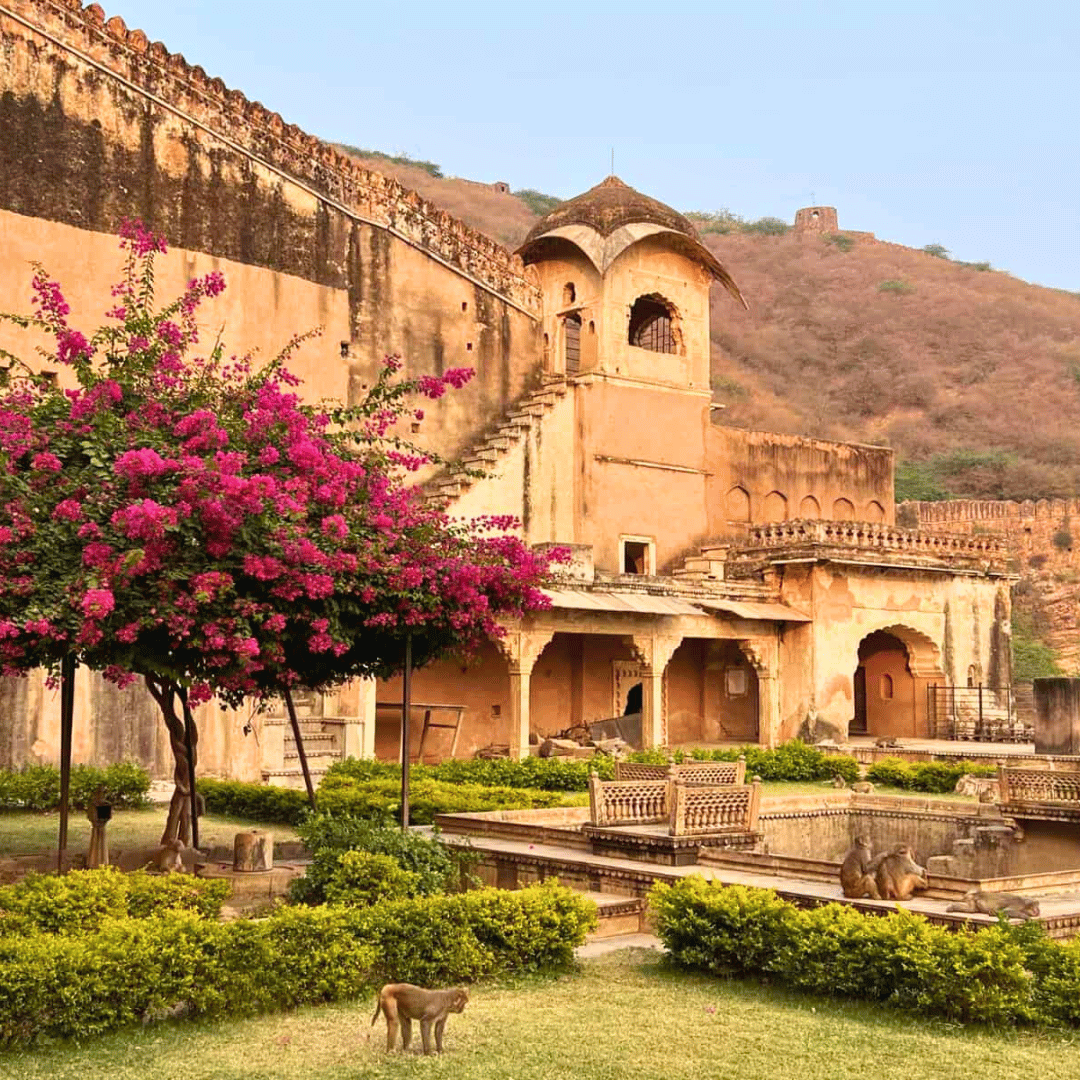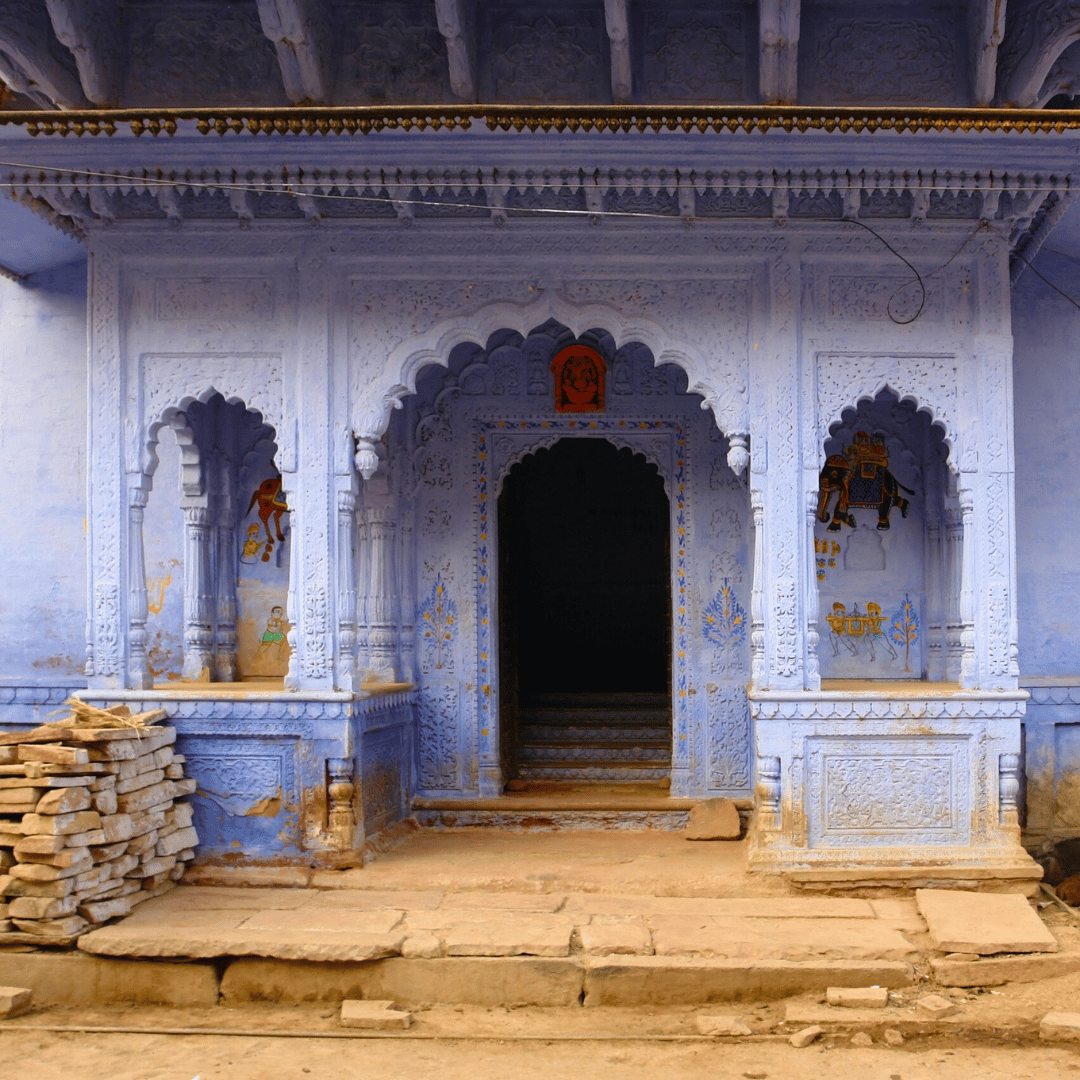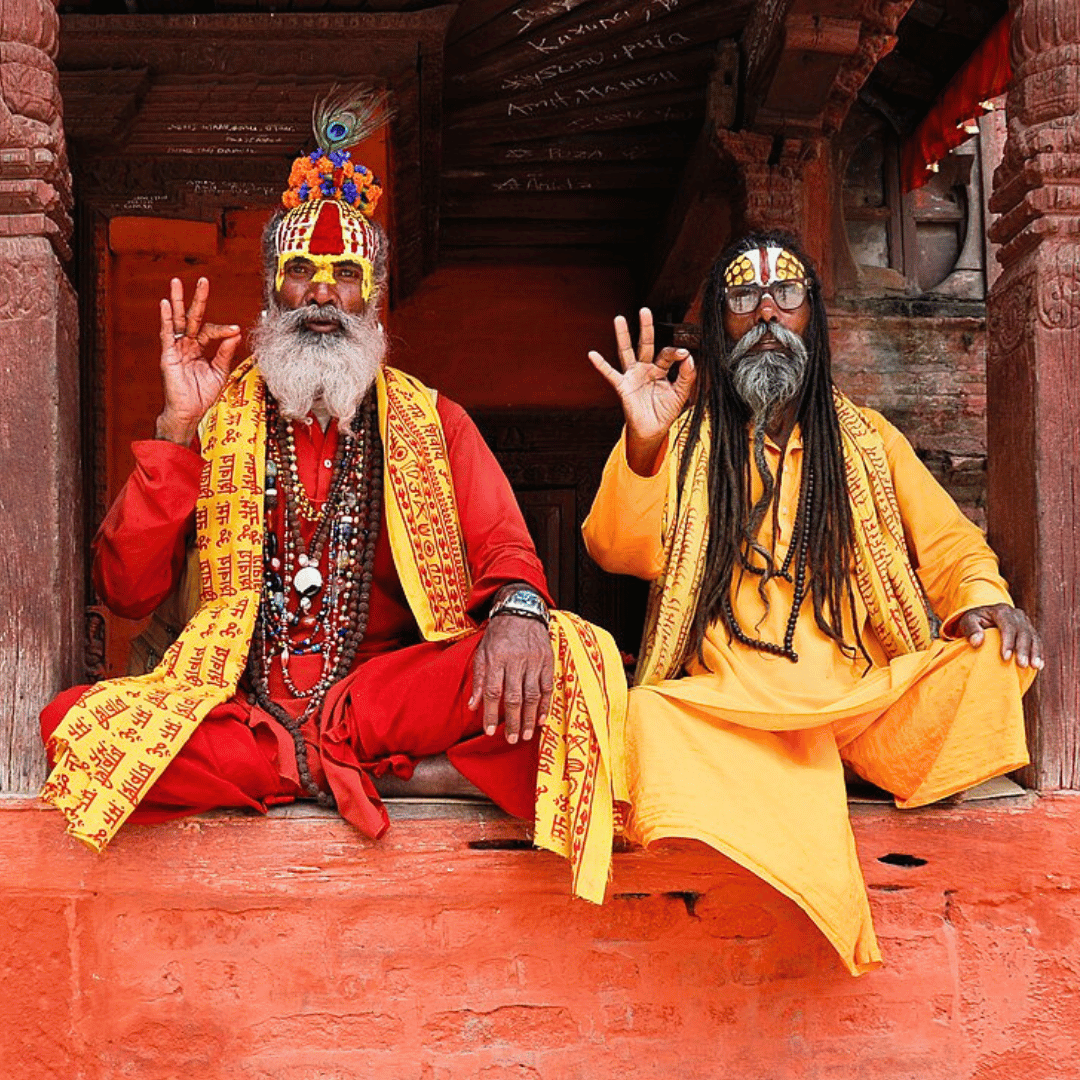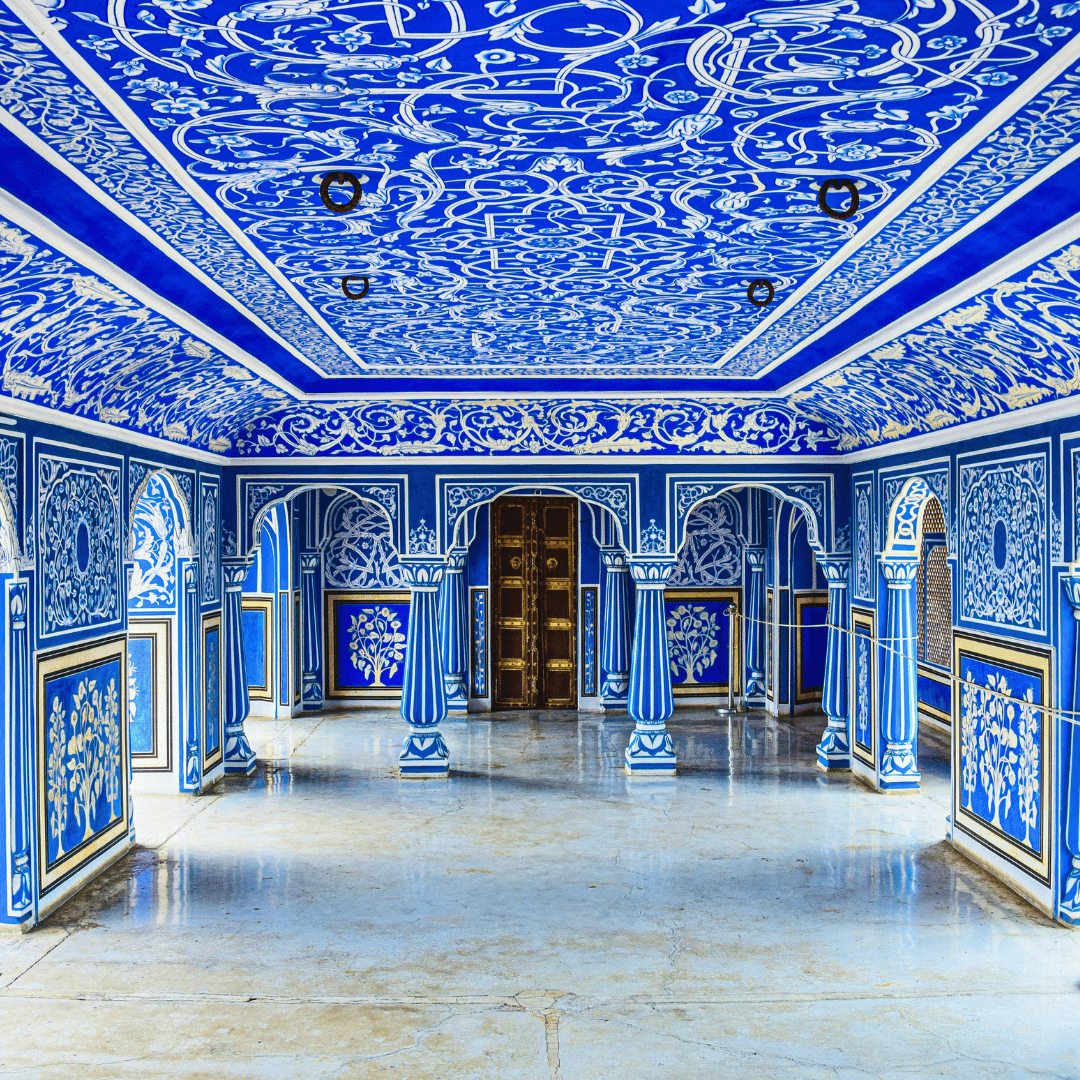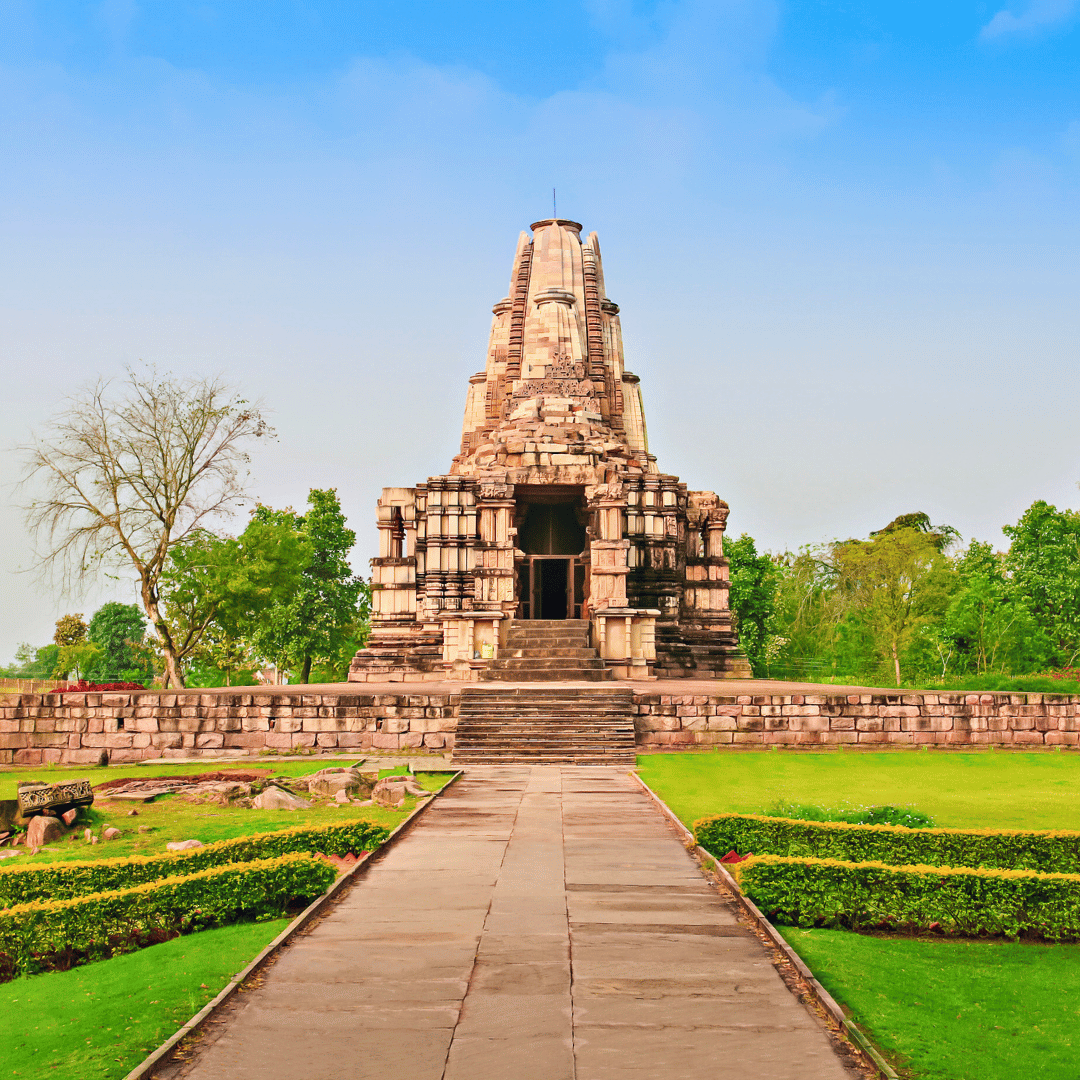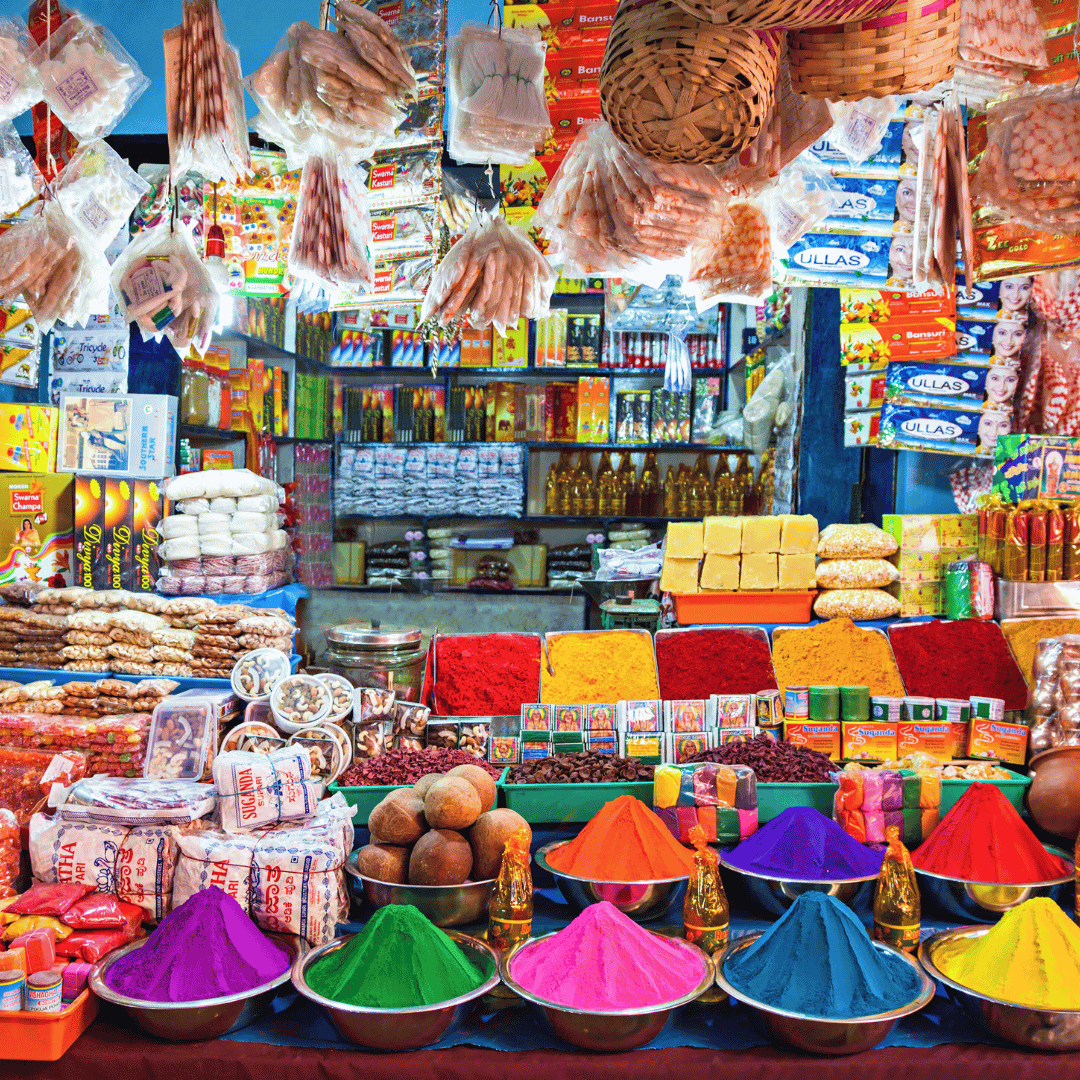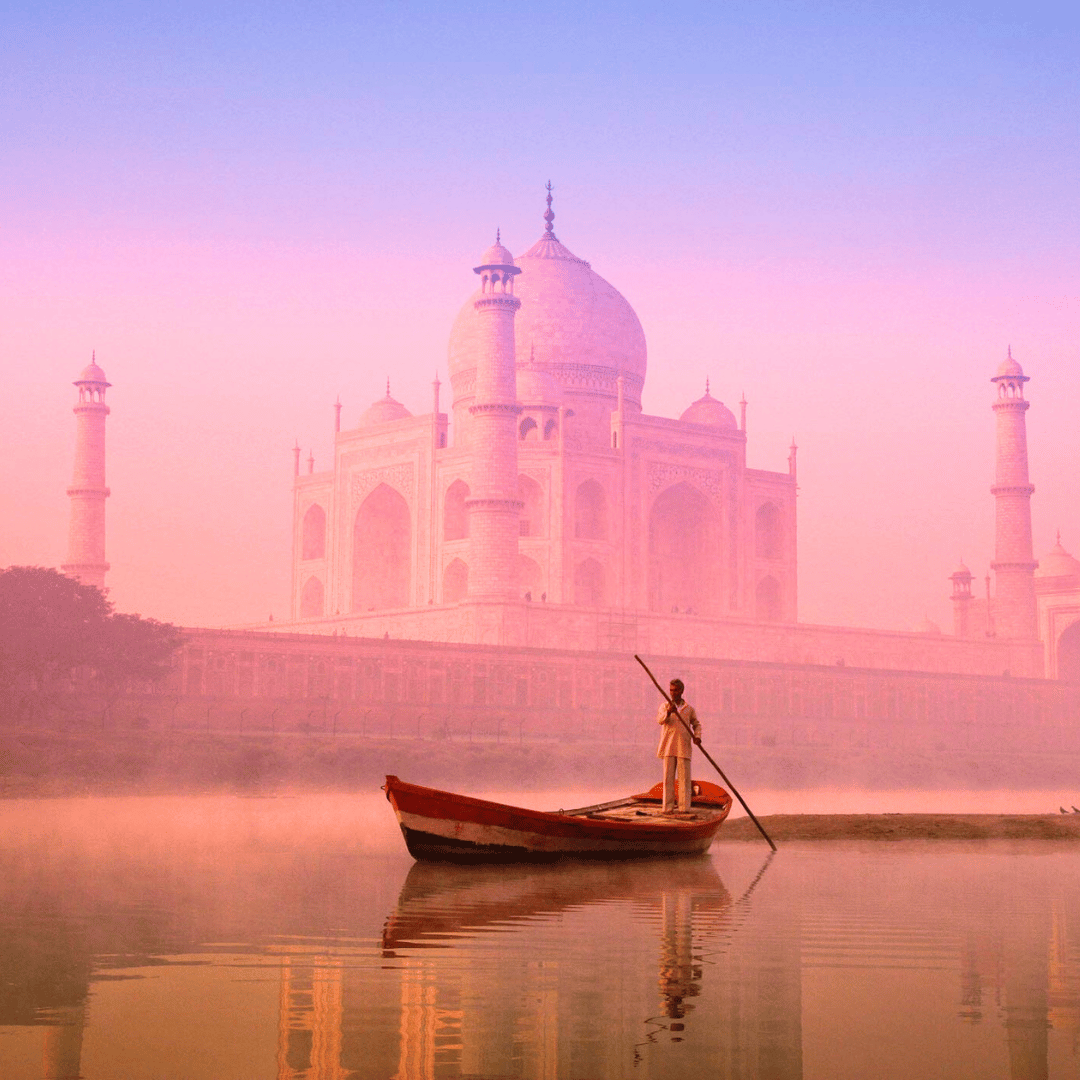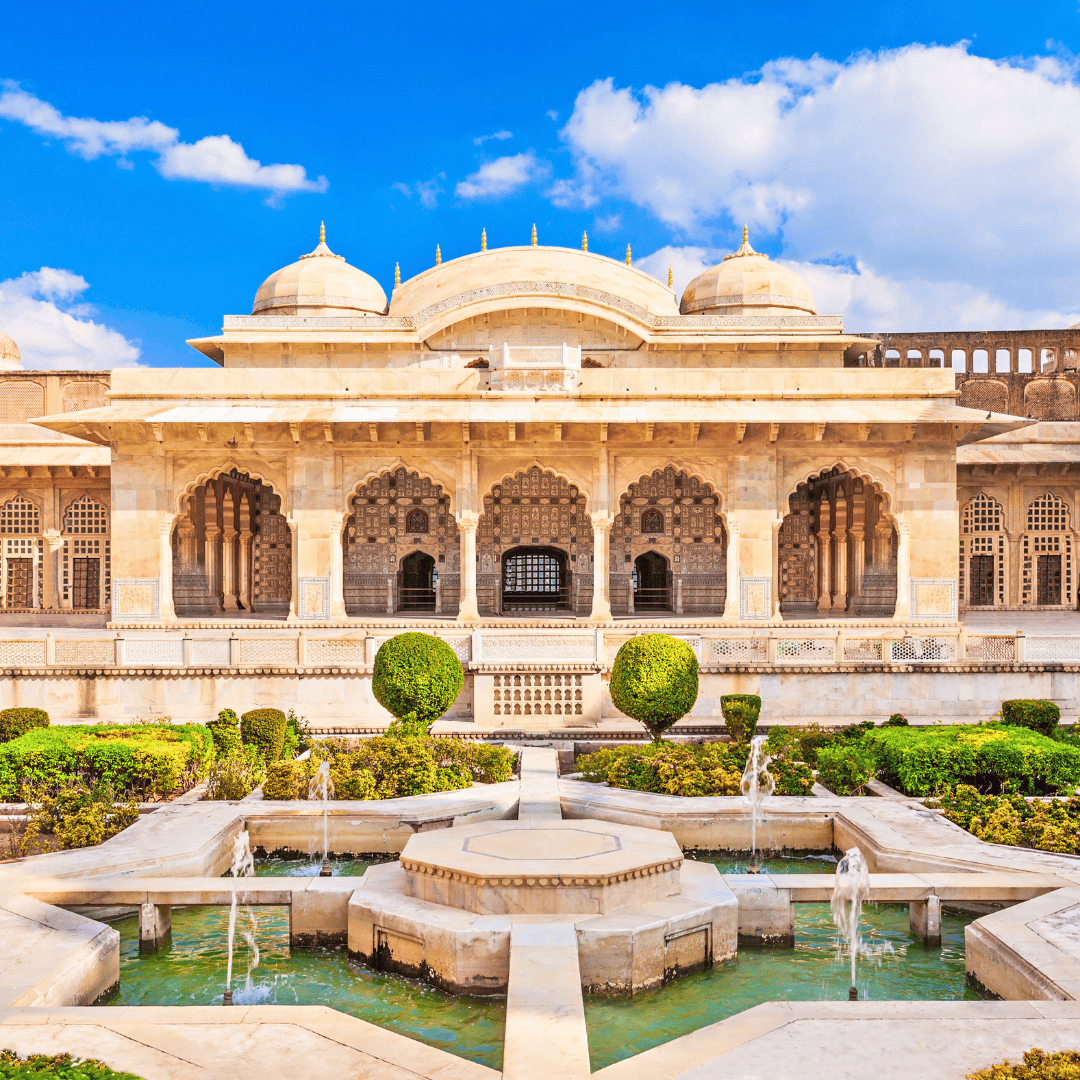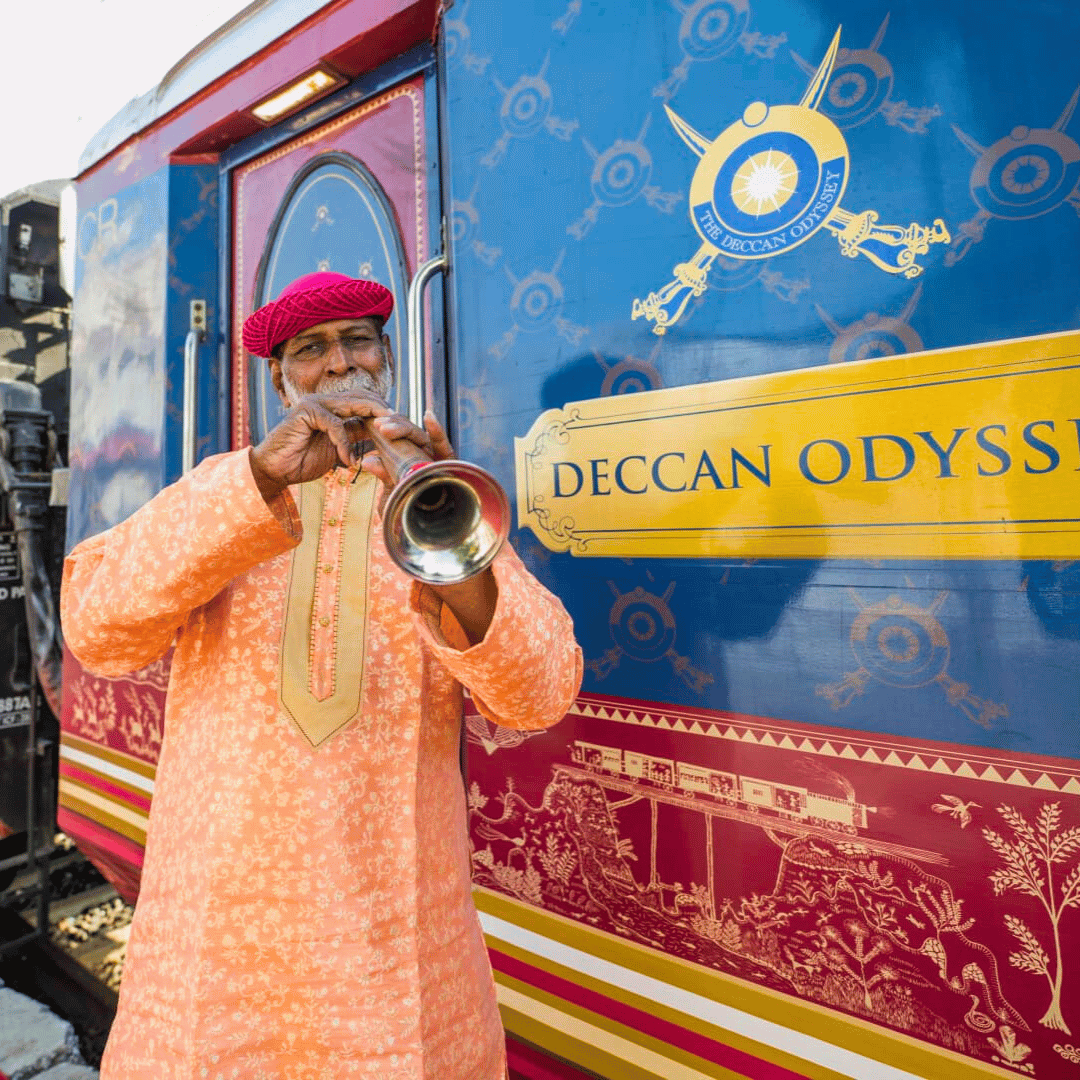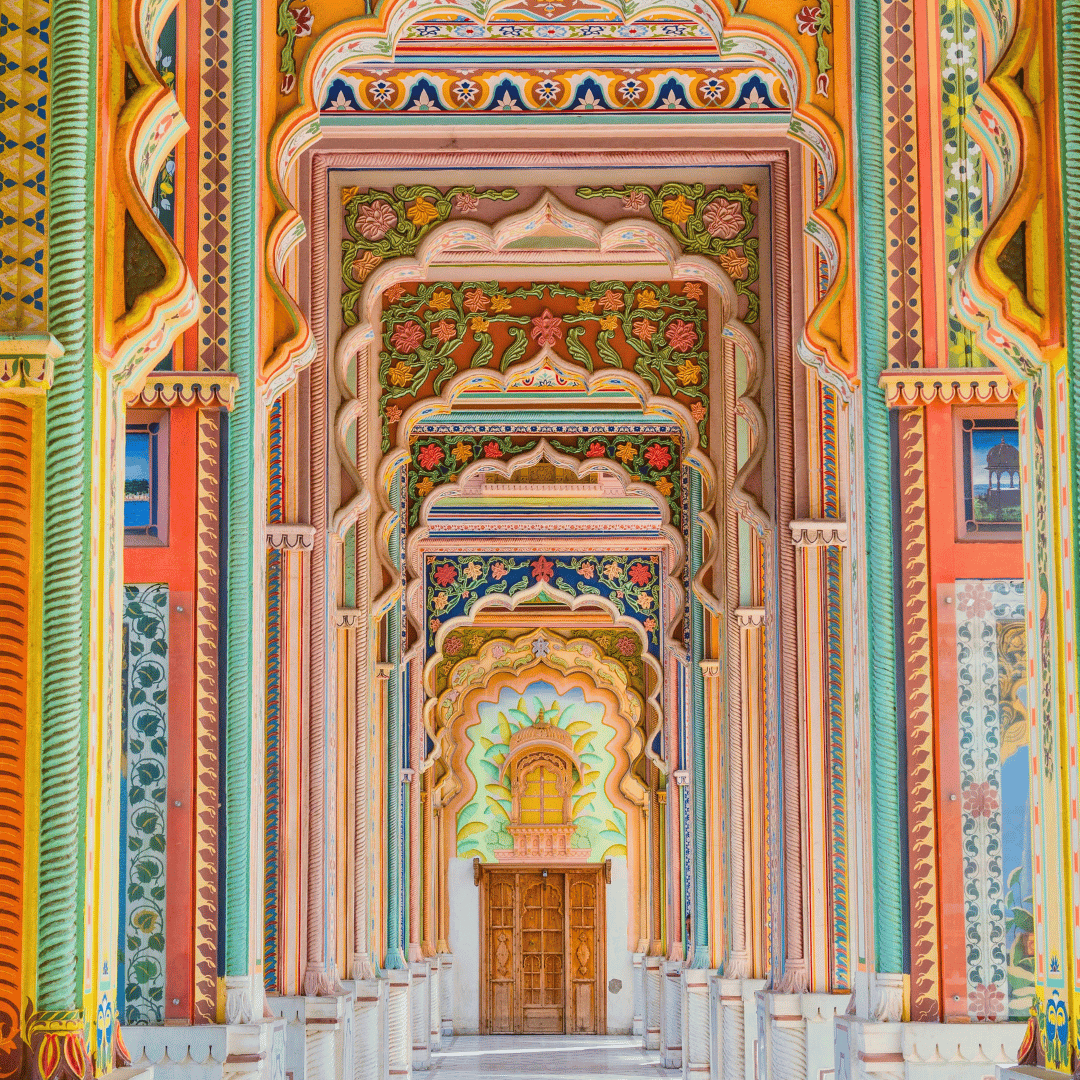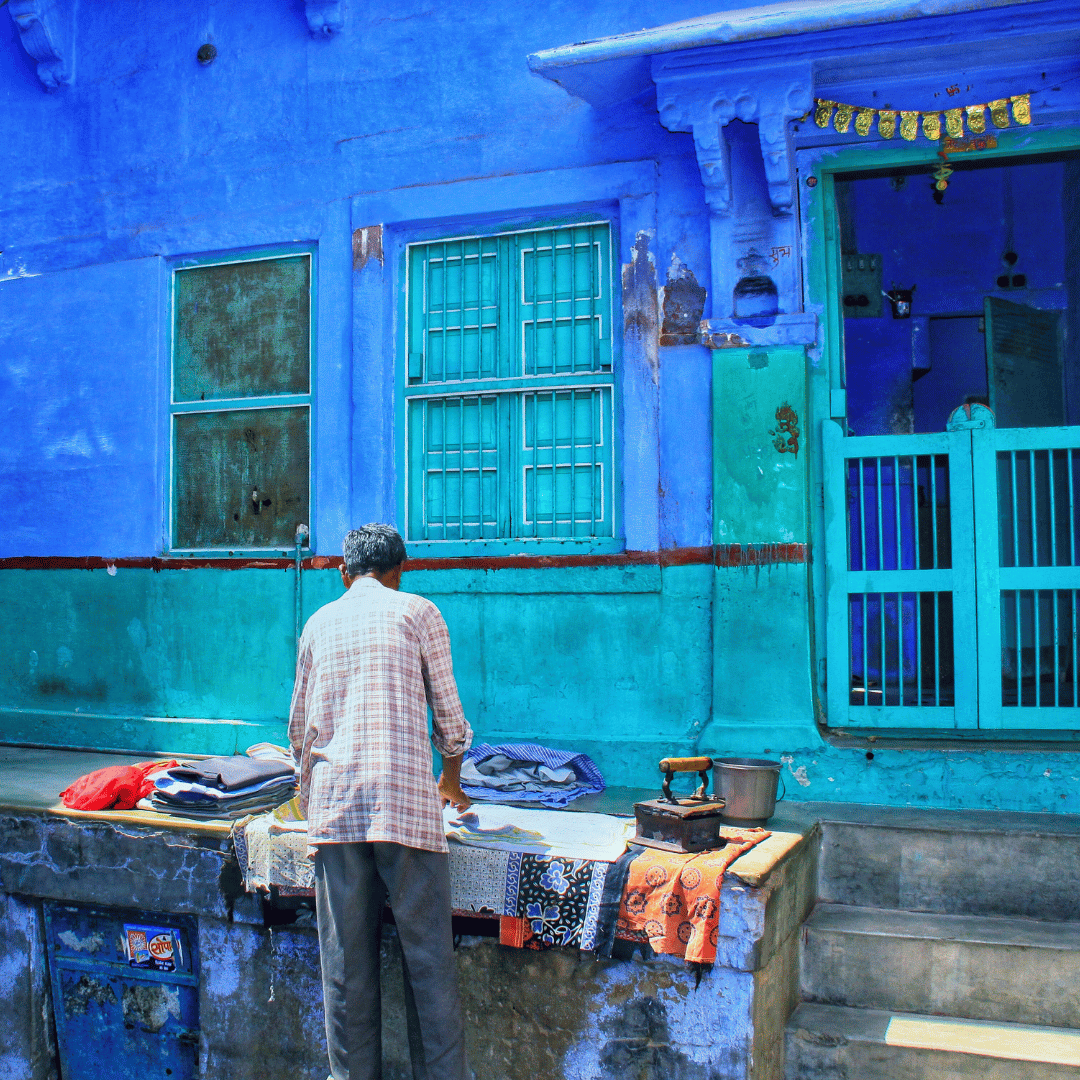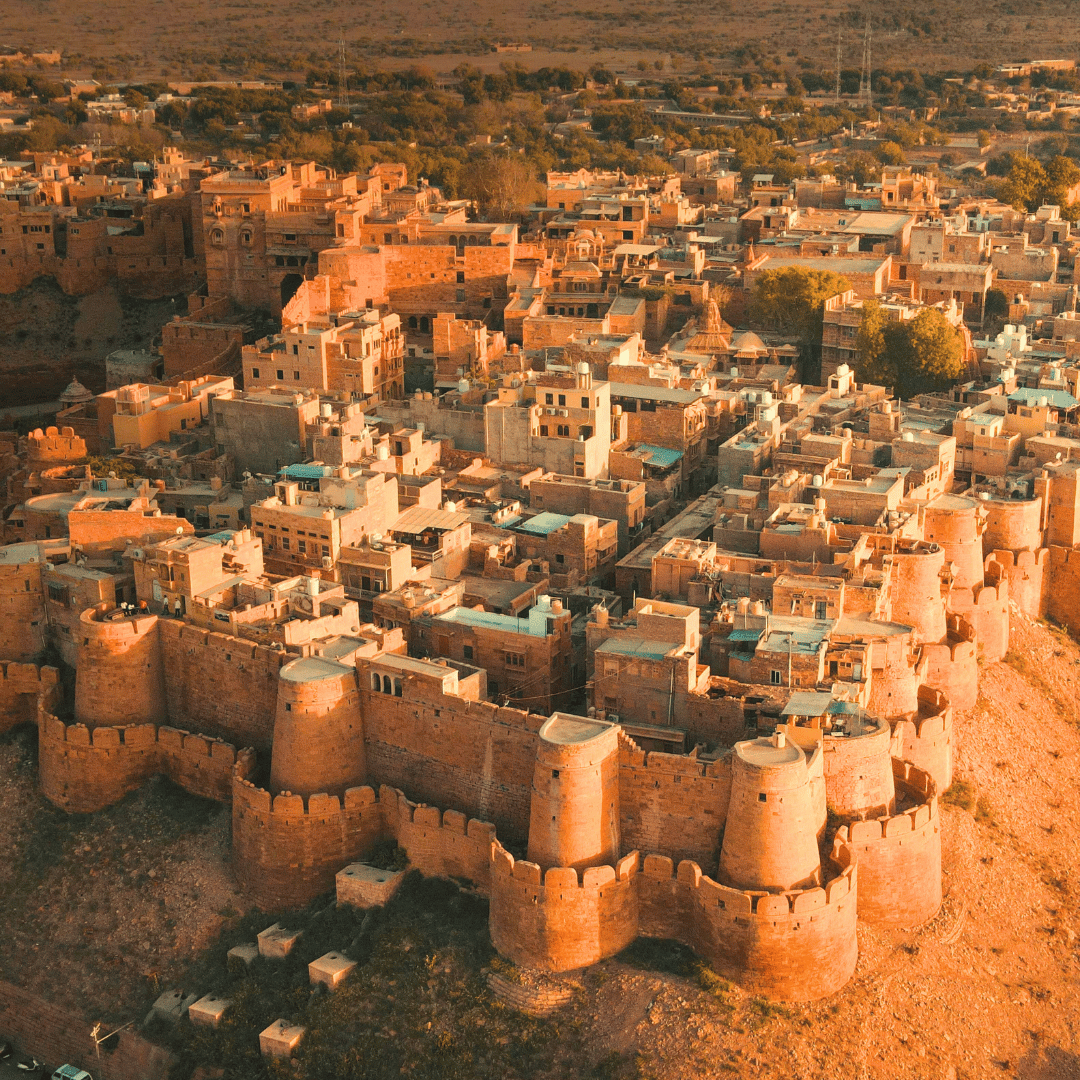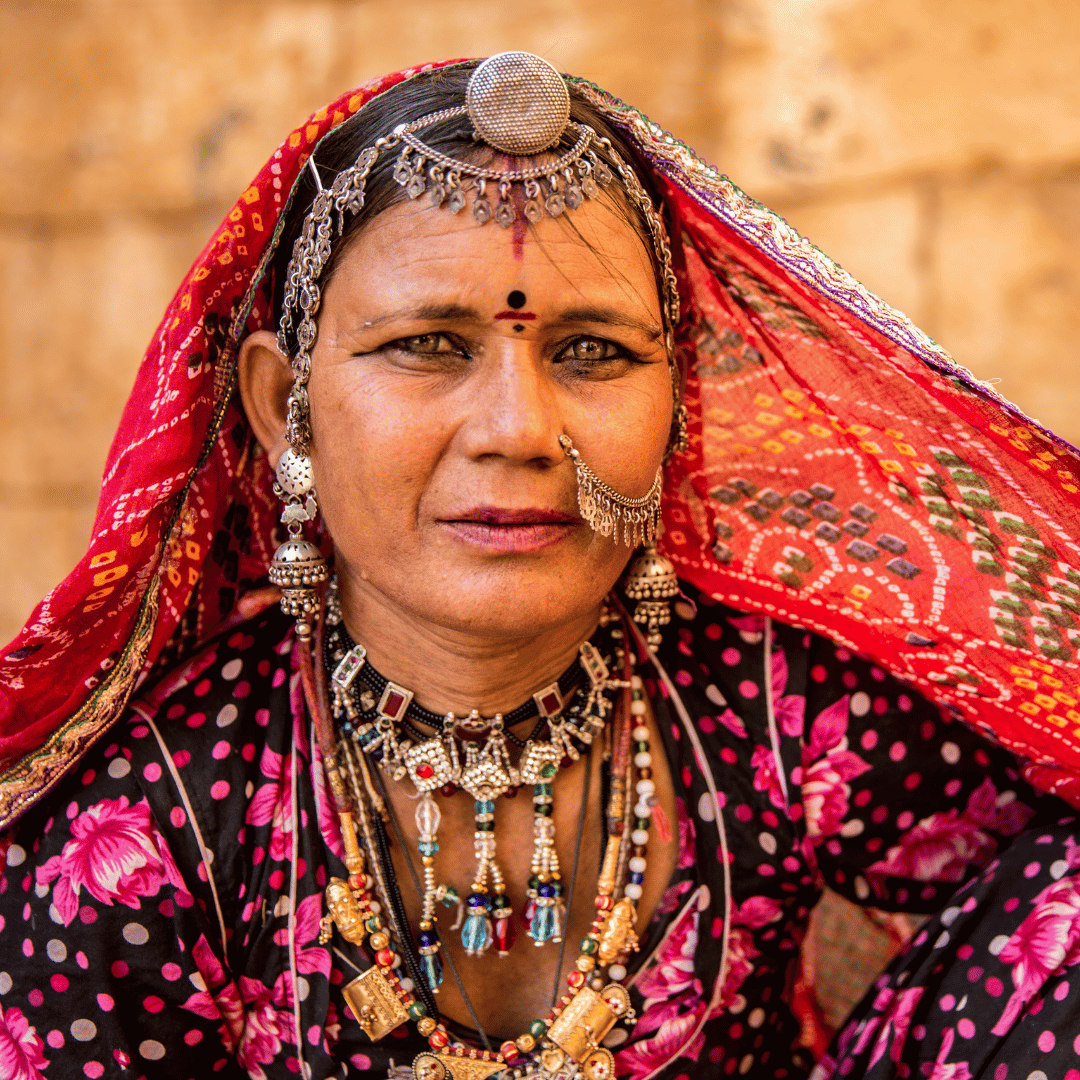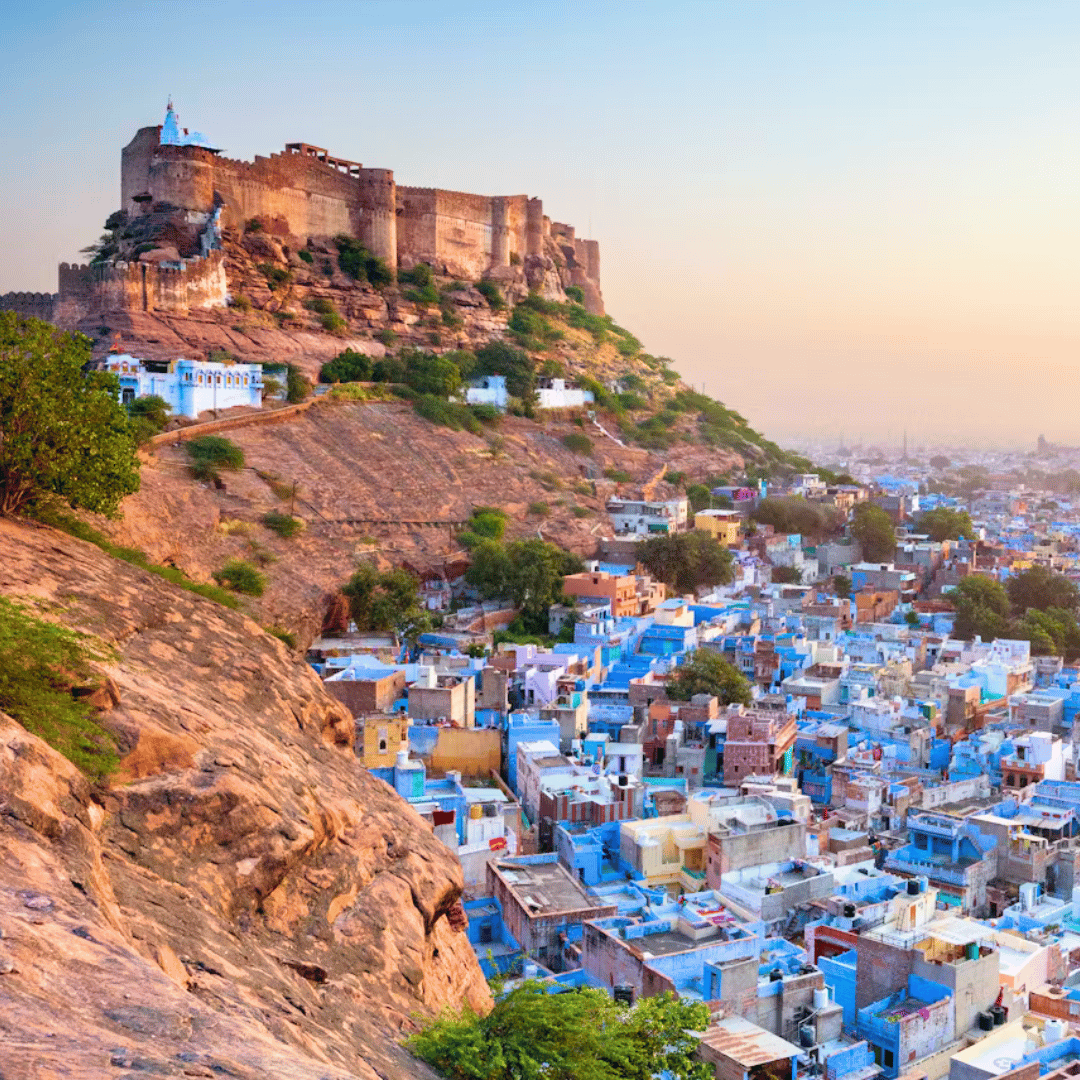10 Days Rajasthan Tour Itinerary
-
Welcome to India! You will be met upon arrival and transferred to your hotel. For most first-time visitors, Delhi presents two distinct faces - Old Delhi, with its lively bazaars like Chandni Chowk and impressive Mughal monuments and forts, and New Delhi, with its wide, tree-lined avenues and modern developments. However, if you dig a little deeper, you’ll discover why Delhi is often referred to as the “Immortal City.” Built over centuries, from the 10th to the 21st, Delhi boasts a remarkably long and continuous history, making it one of India’s most captivating and intriguing cities.
-
Delhi offers a wealth of spectacular sights waiting to be explored. Spend the day with a local guide, who will tailor the itinerary to suit your personal interests. You might begin with a cycle-rickshaw ride through the bustling lanes and crowded bazaars of Chandni Chowk - the ‘Moonlit Square.’ This vibrant, historic market will transport you back four centuries, giving you a real feel for the city’s rich past.
Next, wander through the Qutub Complex, located within the Mehrauli Archaeological Park. This area is home to several important historical sites, including the impressive Qutub Minar, a 72.5-metre-tall red sandstone minaret. The tower’s construction began in 1200 AD under the first Muslim ruler of Delhi and was completed in 1368, making it one of the oldest and most significant monuments of its kind.
Afterwards, head to the beautiful garden-tomb of Humayun, the second Mughal Emperor, built in 1565. This magnificent structure is one of the finest examples of early Mughal architecture and was an inspiration for many later monuments, including the iconic Taj Mahal, built a century later.
You can also visit the Jama Masjid, the largest mosque in India, constructed in 1656 by Emperor Shah Jahan, the same ruler who commissioned the Red Fort and the Taj Mahal. The grandeur and intricate design of the mosque make it one of Delhi’s most impressive landmarks.
For a more reflective experience, visit Raj Ghat, the simple yet poignant memorial to Mahatma Gandhi, where the Indian leader was cremated. You can also explore the modern, lotus-shaped Bahá’í Temple, known for its unique and peaceful design.
In the afternoon, take a stroll through the stately government buildings, colonial bungalows, and the Presidential Palace along the tree-lined boulevards of New Delhi, designed by British architect Edwin Lutyens. The area exudes a sense of old-world grandeur and offers a sharp contrast to the busy markets of Old Delhi. With so much to see and experience, Delhi provides a fascinating blend of history, culture, and architecture.
-
Depart for Agra this morning, a city steeped in history and renowned as the capital of Mughal India during the 16th and 17th centuries. Agra is home to the magnificent Agra Fort and, of course, the world-famous Taj Mahal - one of the Seven Wonders of the World, which attracts nearly 4 million visitors each year.
This afternoon, you’ll explore the imposing red sandstone Agra Fort, located on the west bank of the Yamuna River. Built by the great Mughal Emperor Akbar between 1565 and 1573, the fort is a remarkable example of Mughal military architecture. Within the fort’s vast complex, you’ll discover some of India’s finest Mughal buildings, including the beautiful Pearl Mosque, known for its delicate and intricate design. You’ll also visit a number of royal palaces, such as the Sheesh Mahal, famous for its mirror work, and the Musamman Burj, a watchtower from which Emperor Shah Jahan, during his final years, could view the Taj Mahal in the distance, a poignant sight given the story behind the Taj's creation.
-
Rise early to witness the sun rising over the iconic white marble dome of the Taj Mahal - a truly quintessential Indian experience. This magnificent structure, built by Emperor Shah Jahan in memory of his beloved wife, Mumtaz, who passed away in 1631, stands as both a grand and sublime monument to love. The Taj Mahal is an architectural masterpiece, perfectly symmetrical and exquisitely crafted. It is said that over 20,000 labourers and craftsmen from India and Central Asia worked tirelessly for twenty-two years to bring this vision to life. Standing before it at sunrise, when the marble reflects the soft light of the morning, you’ll be struck by its beauty and serenity.
After taking in the awe-inspiring sight, return to your hotel for breakfast before continuing your journey to Jaipur. Along the way, make a stop at the impressive red sandstone city of Fatehpur Sikri. Built between 1569 and 1585, this city was once the imperial capital of Emperor Akbar. Fatehpur Sikri was abandoned in 1600, possibly due to water shortages, but remains in remarkable condition, offering a glimpse into the grandeur of the Mughal Empire. One of the city’s most stunning features is the Tomb of Salim Chisti, a dazzling white marble structure set against the dusky-pink sandstone courtyard, exuding both spiritual significance and architectural brilliance.
Continue your journey to Jaipur, the capital of Rajasthan. Founded in 1727, Jaipur is known as the "Pink City" because of the distinctive pink hue of the buildings in its historic walled town. In 1876, Maharaja Ram Singh ordered the city’s buildings to be painted pink in honour of the visit by the Prince of Wales (who later became King Edward VII), a gesture that has become one of the defining features of the city.
-
Explore Jaipur today with a local guide, beginning with a visit to the stunning 16th-century Amber Fort, located high on a hill just outside the city. Established in 1592 by Man Singh I on the remains of an 11th-century fort, Amber Fort served as the Kachhawaha rulers' citadel until 1727, when their capital moved to Jaipur. One of the fort’s most beautiful features is the Sheesh Mahal, or Palace of Mirrors, which is completely decorated with intricate, glittering mirrors that create a dazzling effect in the light.
Afterwards, continue your exploration with a visit to the City Palace, a splendid introduction to Jaipur's princely past. This sprawling complex seamlessly blends Rajput and Mughal architectural styles, with open, airy public spaces leading into the private apartments. The City Palace also houses a museum showcasing a variety of royal treasures, including royal costumes, weaponry, musical instruments, Mughal carpets, manuscripts, and miniature paintings that offer a glimpse into the opulent lifestyle of the Rajput rulers.
Next, visit Jantar Mantar, an ancient astronomical observatory that was brilliantly designed and constructed between 1728 and 1734 by Sawai Jai Singh II, a king with a keen interest in astronomy. This observatory is the largest and best-preserved of the five he built across India, and it remains a fascinating testament to the advanced scientific knowledge of the time.
End your tour with a visit to the whimsical Hawa Mahal, or Palace of Winds. Standing five storeys high but just one room deep, this remarkable building was designed in 1799 to extend the chambers of the royal harem, allowing the women to observe everyday life in the streets below, all while remaining unseen. Its striking pink sandstone façade has become one of the most iconic landmarks of Jaipur, and it’s a must-see during your visit to the city.
The remainder of the day is free for you to explore at your own pace. You might like to wander through Jaipur’s fascinating bazaars, which are brimming with colourful Rajasthani souvenirs such as papier-mâché puppets, traditional jooti (curly-toe) shoes, intricate jewellery, and vibrant textiles. These bustling markets are perfect for picking up unique gifts and experiencing the lively culture of Jaipur.
-
Depart for Jodhpur this morning, a journey that will take you to a city rich in history and culture. Founded by Rajput Chief Rao Jodha in 1459, Jodhpur was once the capital of the Marwar State and became a major trading hub during the 16th century, thanks to its strategic location along the ancient Silk Route. Its position on the edge of the vast Thar Desert not only made it an important centre for commerce but also shaped the city’s unique character and architecture.
Today, Jodhpur is Rajasthan’s second-largest city, often referred to as the "Blue City" due to the striking indigo-painted houses that dot the old town, creating a stunning visual contrast against the desert landscape. The blue hue is traditionally linked to the Brahmin class, who began painting their homes in this colour, and over time, it has become one of the defining features of the city. As you approach Jodhpur, you’ll be welcomed by a landscape steeped in history, with ancient forts, palaces, and vibrant bazaars waiting to be explored.
-
Begin your exploration of Jodhpur today with a visit to the impressive Mehrangarh Fort, one of Rajasthan’s largest and best-preserved forts. Perched high on a rocky hill, this magnificent fort offers stunning panoramic views of the city below. Founded in 1638, the fort was constructed over a period of 500 years, resulting in a fascinating blend of architectural styles that reflect the changing influences of different periods. As you wander through the fort, you’ll discover an array of fine palaces, each boasting beautifully preserved royal apartments and intricately carved balconies. These are interspersed with vast courtyards, adding to the fort’s grandeur. The Mehrangarh Museum is a highlight of the fort, housing a vast collection of priceless relics from Indian courtly life, including ancient weapons, musical instruments, royal costumes, palanquins, and period furniture - all showcasing the opulence and cultural richness of Rajasthan’s royal past.
After your visit to Mehrangarh Fort, continue to another of Jodhpur’s architectural gems, the exquisite Jaswant Thada. This royal cenotaph was built in 1899 by the Maharani in memory of her husband, Maharaja Jaswant Singh. Constructed from thin, highly polished sheets of intricately carved white marble, the cenotaph is a strikingly delicate and beautiful monument. It stands in serene contrast to the imposing Mehrangarh Fort, set within a peaceful multi-tiered garden that features gazebos and a small lake. The tranquil surroundings make it a perfect spot for reflection and admiring the fine craftsmanship of the memorial.
After visiting these two magnificent landmarks, you might like to spend some time wandering through the bustling bazaars near the city’s tall clock tower. The narrow lanes of the market are a vibrant maze filled with local crafts, textiles, jewellery, spices, and street food, offering a true taste of the lively culture and history of Jodhpur.
-
Depart this morning for Udaipur, often referred to as Rajasthan’s ‘White City’ or the ‘City of Lakes.’ Known for its stunning white marble palaces, serene lakes, and lush green hills, Udaipur is widely considered one of Rajasthan’s most romantic cities. Its picturesque setting, combined with its rich history and cultural heritage, has made it a favourite destination for travellers from around the world.
Upon arrival, you’ll have the chance to admire the city’s beautiful architecture, with its delicate blend of Rajput and Mughal influences reflected in the palaces, temples, and havelis that line the lakes. Udaipur’s tranquil atmosphere, with its intricate carvings and peaceful surroundings, provides the perfect backdrop for exploring.
Later this afternoon, enjoy a sunset boat ride on the scenic Lake Pichola. As you glide along the water, you’ll be treated to magnificent views of the City Palace, Jag Mandir Island, and the surrounding hills, all bathed in the soft golden light of the setting sun.
-
Spend today sightseeing with a local guide, starting with a visit to the magnificent City Palace. Begun in 1559 by Maharana Udai Singh, the founder of Udaipur, the palace was expanded over the next 300 years by successive rulers, making it the largest palace complex in Rajasthan. This vast and intricate complex comprises eleven separate mahals (palaces) connected by a series of courtyards, gardens, and stunning architectural features.
Two of the most notable areas within the City Palace are the Mor Chowk, or Peacock Square, and the Sheesh Mahal, the Palace of Mirrors and Glass. Mor Chowk is renowned for its three intricately carved peacocks in brilliant mosaic relief, symbolising the Rajput rulers' regal elegance and artistic finesse. The Sheesh Mahal, with its dazzling mirror work, reflects the opulence of the time, and the palace’s design is simply breathtaking. Inside the palace, you’ll also find a museum that showcases a collection of royal artefacts, providing a fascinating glimpse into the grandeur of Udaipur’s royal history.
Next, head to the impressive Jagdish Temple, built in 1652. As the largest temple in Udaipur, it stands as a fine example of Indo-Aryan architecture and is dedicated to Lord Vishnu. The temple is home to a black stone image of Lord Vishnu as Jagannath, the creator of the universe. The walls of the temple and the towering shikara (spire) are adorned with beautiful carvings depicting Vishnu, scenes from Lord Krishna’s life, and elegant figurines of apsaras (celestial nymphs). Like most Hindu temples, Jagdish Temple is a vibrant centre of worship, with devotees constantly coming to offer their prayers.
Conclude your tour with a visit to Sahelion-Ki-Bari, a historic garden laid out in the mid-18th century for a retinue of forty-eight young ladies-in-waiting, who were sent to Udaipur as part of a princess’s dowry. This ornamental pleasure garden features lush lawns, marble pavilions, and a beautiful round lotus pond, adorned with four marble elephants that spout water. The serene surroundings and well-maintained gardens provide a peaceful escape, offering a glimpse into the royal lifestyle of the time.
In the evening, consider attending the dramatic ‘Sound and Light’ show at the City Palace. This captivating performance brings the rich history of Udaipur to life through a blend of music, light, and storytelling, offering a perfect end to your day of exploration in Rajasthan’s royal city.
-
Transfer to the airport for a flight to Delhi and onwards to your next destination.
The India Unbound Difference
At India Unbound, we’ve spent twenty years on the ground in India, learning all about its intricacies, landscapes and cultures. We use this first-hand knowledge to carefully curate travel itineraries for our guests, and are proud to be a reputable private touring specialist. In addition, our team of local partners offer guarantees of punctuality, quality and service. All of our India private tour itineraries include all accommodation mentioned, daily breakfasts and other meals as specified, all transfers, touring and sightseeing by air-conditioned Toyota Innova or similar vehicle, and internal flights as outlined in the itinerary. Private activities and sightseeing with English-speaking local guides are included, along with entrance fees, drinking water in the vehicle, and all vehicle-related charges such as tolls, parking fees, and taxes. The cost does not include visas or international flights, personal expenses such as drinks and laundry, meals and activities not specifically listed as included, or camera fees, which are rarely applicable. Prices are listed in Australian dollars and are based on per person, twin share. Please note that these may fluctuate depending on the time of year you’re looking to travel, and the type of accommodation you prefer.







